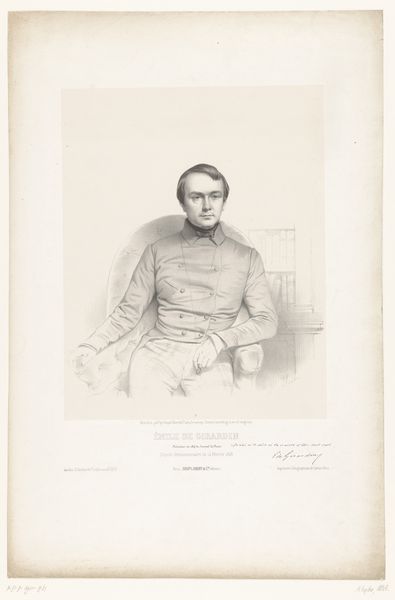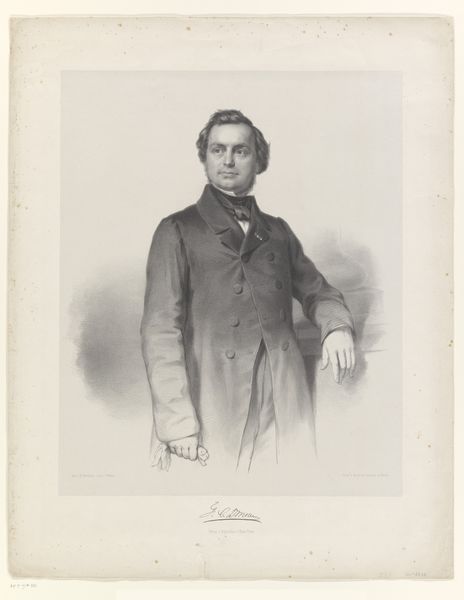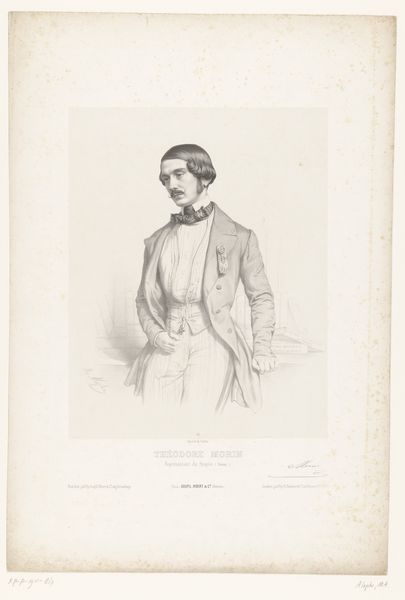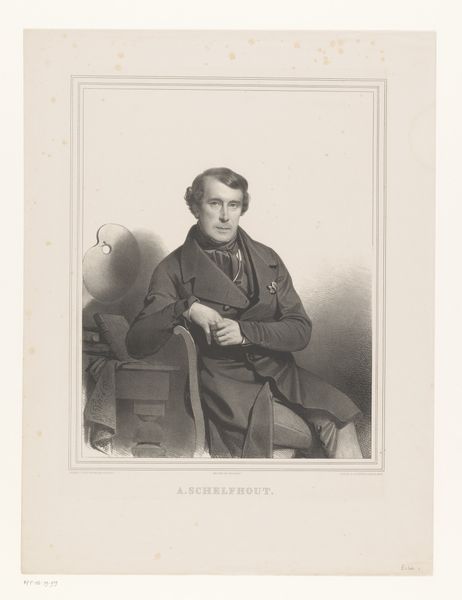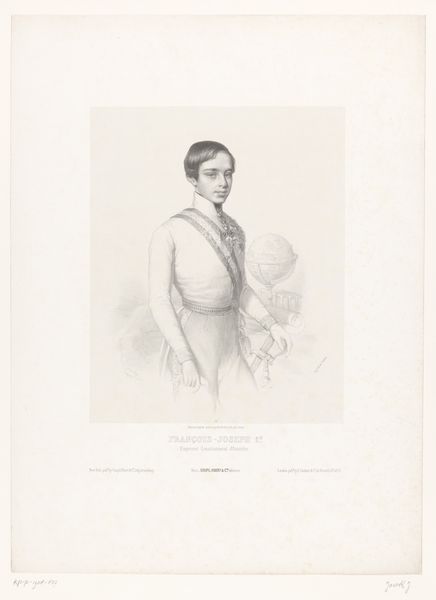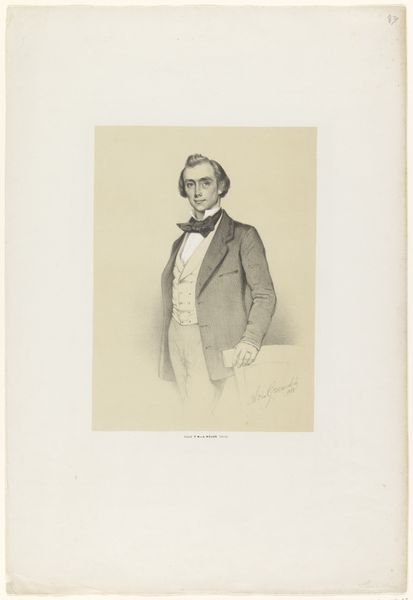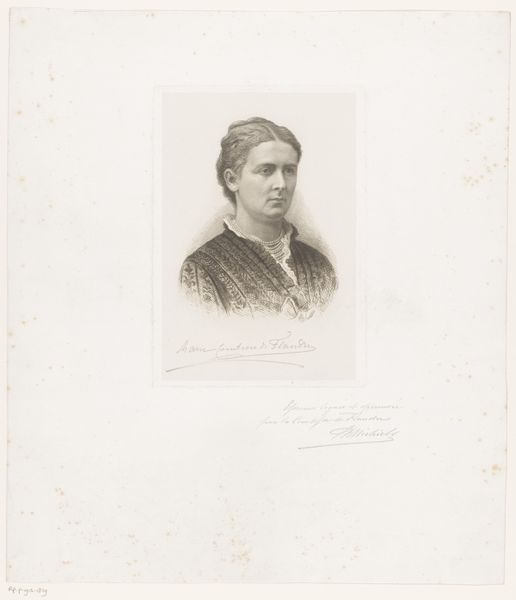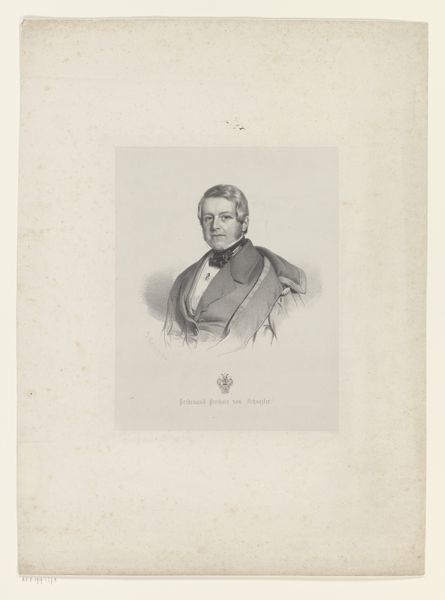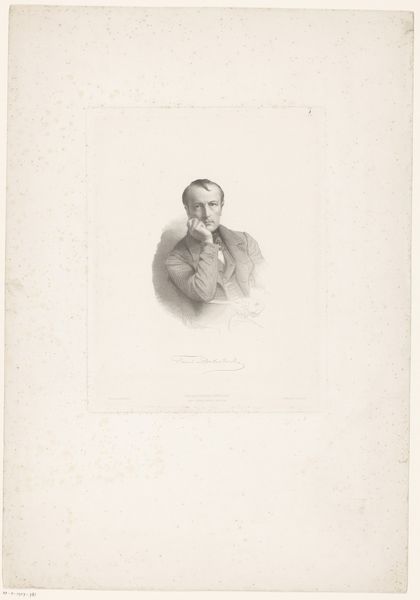
drawing, pencil
#
portrait
#
pencil drawn
#
drawing
#
pencil sketch
#
caricature
#
pencil drawing
#
pencil
#
portrait drawing
#
academic-art
#
realism
Dimensions: height 428 mm, width 308 mm
Copyright: Rijks Museum: Open Domain
Curator: I’m struck by the overall softness of this pencil drawing, the delicate shading used to describe Louis Blanc. It almost feels…fragile. Editor: Indeed. We’re looking at "Portret van minister Louis Blanc," made in 1848 by Marie-Alexandre Alophe. Blanc was a pivotal figure—a journalist, historian, and socialist politician. He advocated for worker cooperatives and had a brief but influential stint in the provisional government after the 1848 revolution. Curator: Ah, 1848! A year of upheaval across Europe. Looking at this portrait, it feels almost like an attempt to idealize Blanc, to present him as a respectable statesman, despite his radical ideas. There is some fascinating tension there. How might this drawing have served his political aims? Editor: Good question. The print was made using lithography and shows how images became useful political tools that were spread more widely with industrialization. But in relation to the image’s physical presence, this type of drawing and these printing techniques became far more widespread in the mid 19th century, transforming access to images of people but especially of political figures. Curator: So the material itself – pencil, lithographic stone – became instrumental in shaping public perception and possibly influencing political agendas, because a mass produced printed version can allow the rapid transmission of images that help cement identity around those individuals. Editor: Exactly. The drawing may lack some technical brilliance but captures a fleeting, idealized moment of leadership during a moment of significant potential shifts in power relations that at times even came to fruition. Curator: Considering his role advocating for workers' rights, it is very interesting to me that the material conditions of its creation, which include new possibilities to manufacture the very representation of its persona and image, also became so crucial in that era, just before modernism. Thank you, I appreciate your insights into both the technical process and material components that highlight political agency. Editor: And likewise; considering this image helps deepen one's understanding of broader social and political events of the time and their possible repercussions makes the process ever richer.
Comments
No comments
Be the first to comment and join the conversation on the ultimate creative platform.
